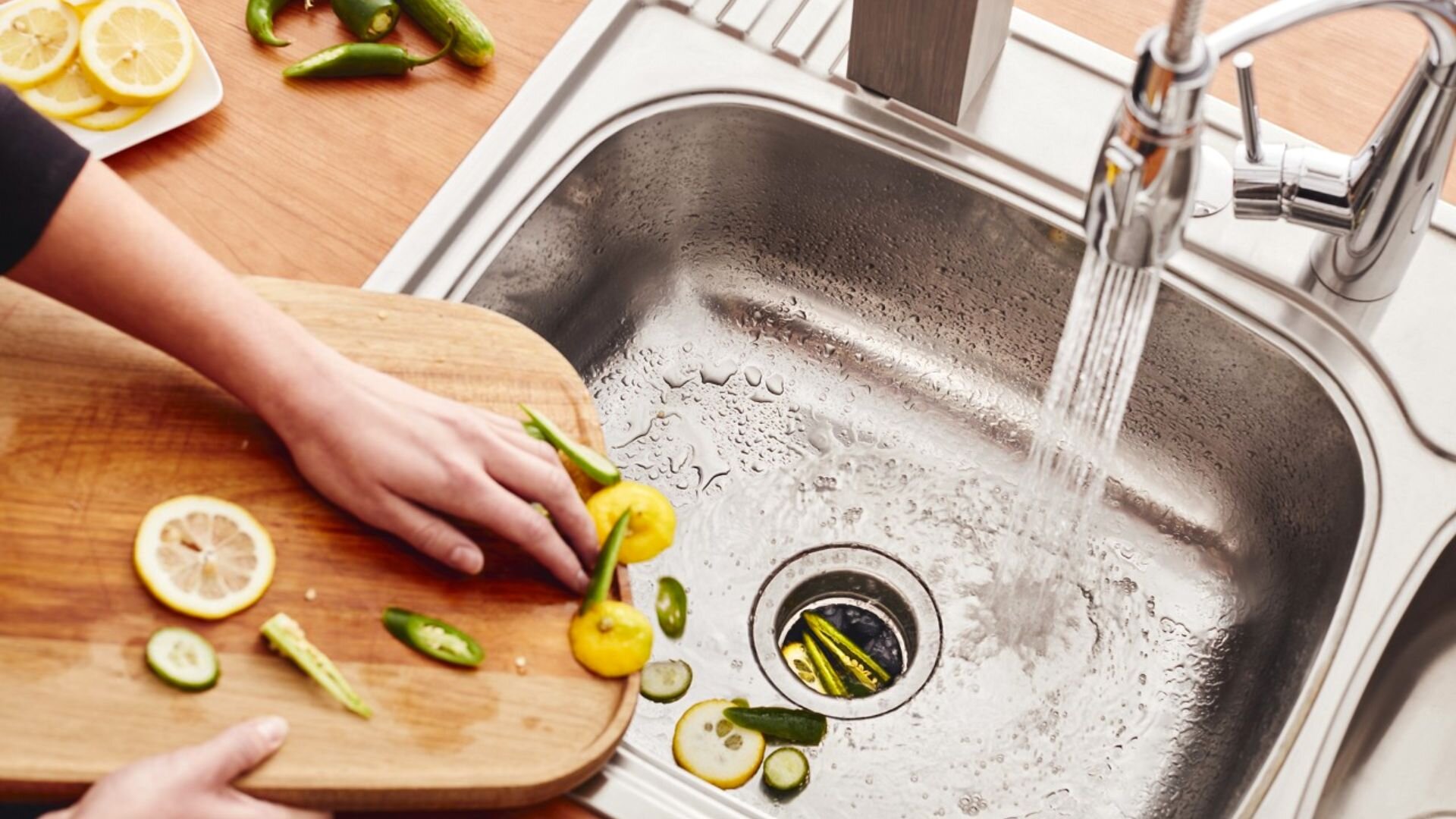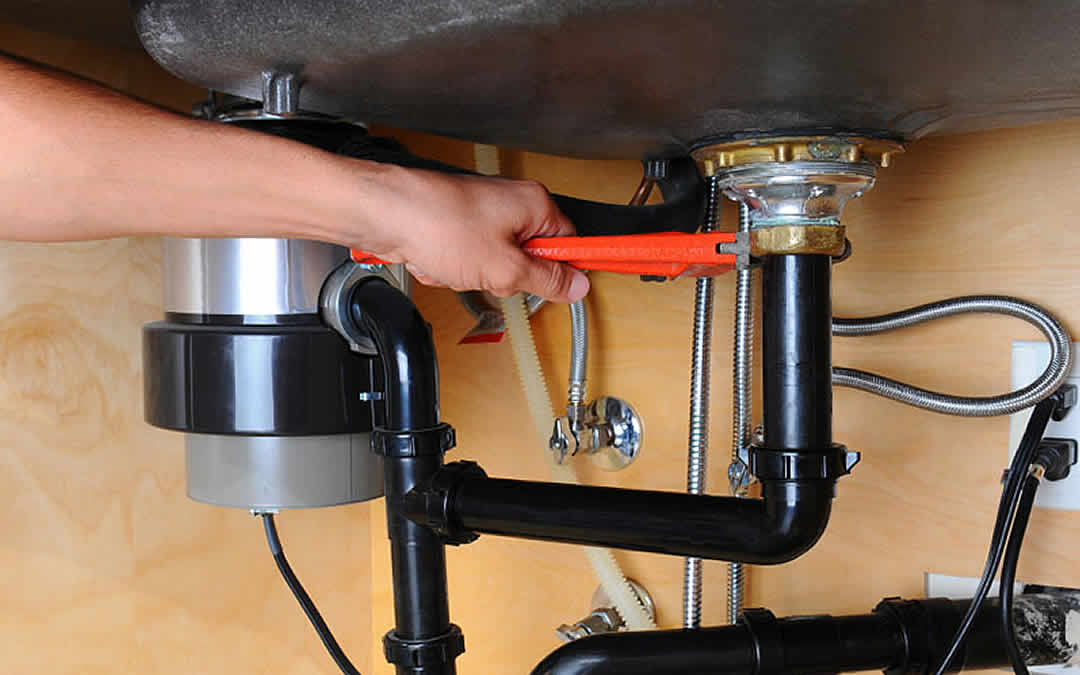Practical Methods for Fixing a Dripping Garbage Disposal
Practical Methods for Fixing a Dripping Garbage Disposal
Blog Article
The author is making several great points relating to Why Is My Garbage Disposal Leaking From the Bottom? as a whole in the article on the next paragraphs.

Garbage disposals are necessary kitchen devices that aid in disposing of food waste successfully. Nevertheless, a leaking garbage disposal can be a discouraging and unpleasant problem to manage. The good news is, many leaks can be dealt with easily with a few easy actions. In this article, we will discuss exactly how to fix a dripping garbage disposal successfully.
Intro
Waste disposal unit are installed under cooking area sinks and are designed to shred food waste right into smaller pieces, enabling it to go through the pipes system conveniently. While these tools are usually trustworthy, leakages can take place gradually due to wear and tear, loosened links, or damages to the unit.
Usual Reasons For Leaks in Trash Disposals
Worn Seals and Gaskets
Seals and gaskets play a vital function in preventing water from dripping out of the garbage disposal. Gradually, these parts can degrade, resulting in leakages around the disposal system.
Loose Links
The links in between the waste disposal unit and the pipes system can end up being loosened with time, triggering water to leak out throughout operation.
Splits or Holes in the Disposal Unit
Physical damages to the waste disposal unit, such as splits or openings in the housing, can also cause leaks.
Determining the Source of the Leakage
Prior to trying to repair a dripping waste disposal unit, it is necessary to identify the resource of the leak. This can commonly be done through visual inspection or by carrying out basic examinations.
Visual Assessment
Check the garbage disposal unit very carefully for any kind of indicators of water leak. Pay attention to locations around seals, gaskets, and connection factors.
Evaluating for Leakages
One method to test for leakages is by running water through the disposal device and checking for any kind of noticeable indicators of leak.
Tools and Materials Needed for Repairing a Dripping Waste Disposal Unit
Before beginning the repair procedure, collect the needed devices and products, including a screwdriver, adjustable wrench, plumbing professional's putty, substitute seals or gaskets, and epoxy or patching product for fixing splits or holes.
Step-by-Step Overview to Dealing With a Leaking Garbage Disposal
Turn Off the Power
Before trying any type of repair work, make certain that the power to the garbage disposal device is turned off to avoid the danger of electrical shock.
Locate the Leak
Recognize the specific area of the leakage and identify the cause.
Tighten up Links
Make use of a wrench to tighten up any loosened links between the disposal system and the pipes system.
Change Seals or Gaskets
If the leak is because of worn seals or gaskets, eliminate the old components and change them with brand-new ones.
Patching Splits or Openings
For splits or openings in the disposal system, use epoxy or a suitable patching product to seal the broken area.
Testing the Waste Disposal Unit After Repair Service
Once the fixing is total, examine the garbage disposal by running water through it to make certain that the leak has actually been solved.
Preventive Maintenance Tips to Stay Clear Of Future Leaks
To avoid future leaks, it is necessary to carry out routine upkeep on your waste disposal unit. This includes maintaining it clean, avoiding placing non-food items or difficult items down the disposal, and periodically checking for leakages or various other concerns.
Verdict
To conclude, dealing with a dripping waste disposal unit is a reasonably simple procedure that can be completed with fundamental devices and products. By complying with the actions detailed in this post and practicing preventive maintenance, you can maintain your waste disposal unit in good working problem and prevent costly repairs in the future.
What to Do About a Leaking Garbage Disposal
A leaking garbage disposal often goes unnoticed until you confront a sopping cabinet, a foul-smelling puddle, or an audible drip-drip-drip from the unit. The fix can be frustrating, too, because the leak can stem from a number of components in the system. Fortunately, with a little sleuthing, you can zero in on the leak and—depending on the exact location—stop the icky oozing and repair the component that caused it. Worst case scenario, if it turns out that the garbage disposal must be replaced, installing a new one is a reasonable do-it-yourself task for those with basic plumbing skills. Read on to keep the cash you’d otherwise hand over to a pro.
Prepare to find the leak
Prior to testing the garbage disposal for leaks, unplug it at the wall outlet and turn off the power from the breaker box to prevent electrical shock. Then insert a watertight sink stopper into your sink drain and wipe the unit dry with a clean cloth. In any handy container, mix a few drops of food coloring into a few cups of water, and pour the dyed water onto the sink stopper to help you locate the leak.
Investigate the source
the top, where the disposal meets the sink drain the side, where the dishwasher hose or main drain pipe connects to the disposal or the bottom of the unit Inspect each of these locations while gliding a light-colored rag over the unit; the dyed water will readily show on the rag and reveal the location of the leak. If a leak isn’t immediately apparent, remove the sink stopper and pour a few more cups of dyed water down the sink drain, then check for leaks again. Leaks near the top of the unit are more likely to show themselves while the sink is plugged, while side and bottom leaks are more noticeable while the sink is unplugged.
The metal sink flange that sits directly inside the sink drain is typically sealed around the top with plumber’s putty (a clay-like sealant) and then secured from under the sink with bolts. If the plumber’s putty deteriorates, or the bolts loosen, the flange can no longer form a watertight seal between the sink drain and the disposal—which could cause a leak at the top of the unit.
To reseal the leaky flange, you must first detach the garbage disposal. Start by loosening the screws securing the main drain pipe to the disposal, then loosen the screws in the metal clamp securing the dishwasher hose to the disposal and detach the drain pipe and dishwasher hose from the disposal. Loosen the screws in the mounting ring that connects the disposal to the metal mounting assembly beneath the sink, then pull down the disposal and carefully set it on a clean, dry surface. Loosen the bolts in the mounting assembly with a wrench, then pull down the mounting assembly and set it near the disposal.

As a keen person who reads about Why Is My Garbage Disposal Leaking From the Bottom?, I figured sharing that excerpt was really helpful. Sharing is good. Who knows, you will be doing someone a favor. I praise you for your time. Please check our site back soon.
Book Today! Report this page